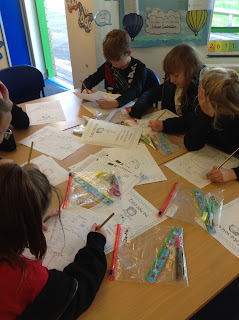In our RE studies this half term, we have been learning about the Hindu faith, with a particular focus on the concept of Brahman. Hindus believe that Brahman is part of everything in the world: it is the supreme spirit and takes many different forms, which are represented by the different deities.
Today in RE, we have been looking at an extract from the Upanishads: an ancient Sanskrit text which forms part of the basis of Hindu teachings. We looked carefully at the text to try and interpret its meaning, prompting some interesting class discussions.
You are a woman. You are a man.
You are the dark blue bee
And the green parrot with red eyes.
The lightning is your child.
You are the seasons of the year
And the sea.
You are a part of everything.
You are everywhere.
Everywhere that is, is born of you.
Svetsvatara Upanishad Ch4
Then we had a go at drafting our own versions, trying to imagine how a Hindu might write about Brahman. Here is a small selection of our work...













































